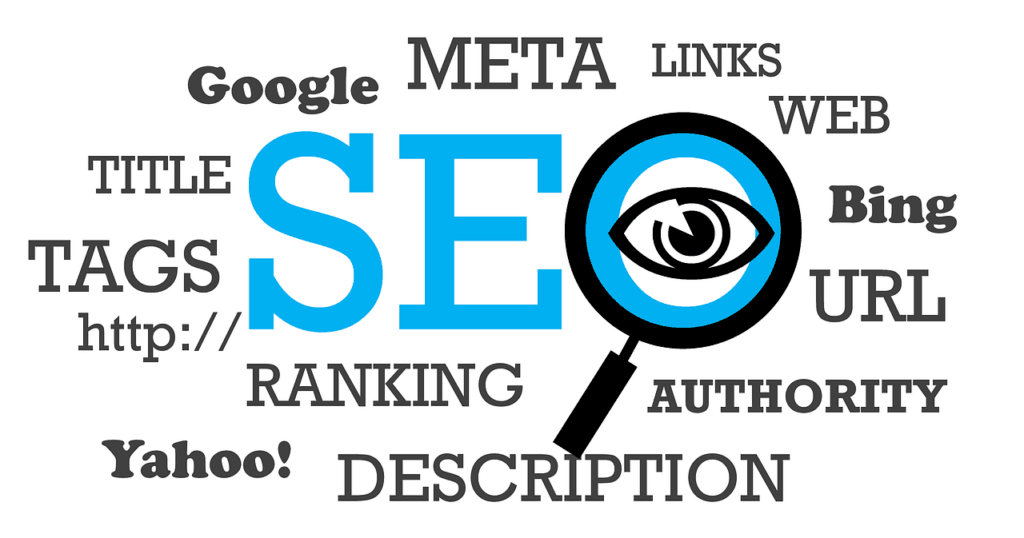Traditional Marketing Overview
Importance of Traditional Marketing
Traditional marketing remains a vital component of a comprehensive marketing strategy. It encompasses various methods such as brochures, posters, banners, postal mailings, and advertisements that have stood the test of time, effectively creating awareness about brands and products. According to Source, these techniques continue to deliver tangible benefits, including credibility and a physical presence that digital marketing may lack.
Notably, traditional marketing channels can provide benefits similar to those of digital marketing with one critical difference—tangible presence. This aspect can be pivotal in building consumer trust and brand loyalty as it allows for more personal interaction with potential customers.
| Traditional Marketing Method | Key Benefits |
|---|---|
| Brochures | Detailed information and easy distribution |
| Posters | High visibility and cost-effective advertising |
| Banners | Instant recognition and brand awareness |
| Postal Mailings | Personalized communication |
| Advertisements | Broad audience reach |
Role of Digital Marketing
Digital marketing plays an increasingly significant role alongside traditional marketing strategies. Its advantages lie in precision and efficiency, allowing businesses to target specific demographics based on data analysis. This capability enables real-time updates and changes to campaigns, unlike traditional marketing methods that rely on static text and materials.
However, while digital platforms provide immediate feedback and data insights, they lack the tangible interactions that traditional methods offer. Understanding the balance between these two approaches is essential for maximizing marketing effectiveness. Businesses must integrate both strategies to enhance overall performance and reach broader audiences.
For a comprehensive understanding of the distinctions and advantages of each approach, consider reviewing our section on traditional vs digital marketing and exploring various traditional marketing methods.
Challenges of Traditional Marketing
Traditional marketing, while effective in certain areas, faces significant challenges that can impede its efficiency and effectiveness. Understanding these issues can help you make informed decisions for your marketing strategies.
Cost Comparison with Digital
One of the primary challenges of traditional marketing is its cost structure. Compared to digital marketing, traditional methods tend to be significantly more expensive. Costs can accumulate from payment for ad placements in television, radio, and print, as well as physical material distribution. In contrast, online marketing provides flexibility, allowing you to make changes without incurring additional costs (BlueLineCapital).
The following table highlights the typical cost differences between traditional and digital marketing:
| Aspect | Traditional Marketing | Digital Marketing |
|---|---|---|
| Initial Setup Cost | High | Lower |
| Ongoing Ad Placement Fees | High | Variable |
| Material Distribution Cost | High | No physical costs |
| Flexibility of Adjustments | Limited | High |
Audience Reach Limitations
Another significant challenge you face with traditional marketing is audience reach. Traditional methods generally rely on mass media platforms such as television, radio, and print advertising. These methods struggle to precisely target specific consumer segments, which can result in wasteful spending and lower engagement levels (Monday Loves You).
In contrast, digital marketing allows for the development of personalized campaigns that resonate with individual consumers. This is achieved through targeted strategies such as search engine optimization (SEO), social media advertising, and email marketing, which can efficiently reach audiences that interact with the brand message.
The limited audience reach of traditional marketing poses a challenge, particularly for businesses aiming to connect with niche markets. As reported in the 2024 Small Business Trends survey, marketing and advertising are cited as significant business challenges, with about 28% of small business owners investing in both traditional and digital methods to reach potential customers (Guidant Financial).
Understanding these challenges will enable you to better navigate the complexities of marketing strategies, potentially integrating both traditional and digital channels to optimize your outreach and efficiency. For a deeper insight into various traditional marketing methods, explore the available resources to enhance your marketing initiatives.
Benefits of Traditional Marketing
Traditional marketing offers numerous benefits, particularly in the context of creating a comprehensive marketing strategy. As you explore these advantages, it becomes clear that traditional methods play a vital role in establishing brand presence and awareness.
Tangible Presence
One of the most distinct advantages of traditional marketing is the tangible presence it provides. Unlike digital marketing, which exists solely in the online world, traditional marketing creates physical representations of your brand that can be interacted with directly. This includes brochures, posters, banners, and postal mailings that have been effective for decades in promoting products and services Source.
The tangible nature of these marketing tools allows consumers to engage with your brand in a way that creates lasting impressions. By utilizing traditional channels, you can enhance visibility and foster a stronger connection with your target audience.
| Traditional Marketing Methods | Tangible Presence (Yes/No) |
|---|---|
| Brochures | Yes |
| Posters | Yes |
| Banners | Yes |
| Postal Mailings | Yes |
| TV Ads | No |
| Radio Ads | No |
According to Hawke Media, traditional marketing channels provide the same benefits found in digital marketing but excel in creating this tangible presence.
Brand Awareness and Product Promotion
Traditional marketing techniques are proven to be effective in building brand awareness and promoting products. Mass media platforms such as television, radio, and print ads have played significant roles in reaching broad audiences. While digital marketing allows for precision targeting, traditional marketing excels in creating general awareness that can lead to brand loyalty.
Utilizing traditional marketing methods can result in immediate visibility for new products or services, allowing your brand to be recognized by a wide audience. The effectiveness of these approaches is supported by statistics that highlight their ability to create awareness.
| Marketing Channel | Brand Awareness Impact (High/Medium/Low) |
|---|---|
| Television | High |
| Radio | Medium |
| Print Ads | Medium |
| Posters | Medium |
Traditional marketing methods often rely on widespread campaigns that inform potential customers about the features and benefits of your products. This approach, while less targeted than digital methods, helps in cultivating a recognizable brand that consumers will turn to.
By integrating traditional marketing with your overall strategy, you can leverage its immense benefits, especially in creating brand visibility and fostering engagement within your target market. For insights on various methods, consider exploring our articles on traditional marketing methods and traditional marketing examples.
Digital Marketing Advantages
In the face of the challenges of traditional marketing, it is essential to recognize the advantages of digital marketing. With its focus on precision and efficiency, as well as the provision of data and analytics insights, digital marketing has become a crucial component of contemporary marketing strategies.
Precision and Efficiency
Digital marketing channels have the capability to reach the same audiences that traditional marketing channels do, often with enhanced precision. Digital platforms allow you to target specific demographics based on interests, behavior, and location, leading to more effective advertising strategies. This targeted approach minimizes wasted resources and optimizes your marketing budget.
| Marketing Channel | Targeting Precision | Resource Efficiency |
|---|---|---|
| Traditional Marketing | Low | Moderate |
| Digital Marketing | High | Very High |
By utilizing advanced tools and metrics, digital marketing ensures that your campaigns are reaching the right audience, resulting in higher engagement and conversion rates. For an in-depth look at various marketing strategies, you can refer to our sections on traditional marketing methods or traditional marketing tactics.
Data and Analytics Insights
One of the most significant benefits of digital marketing is the wealth of data it provides. Digital marketing strategies offer deep insights into consumer behavior, campaign performance, and return on investment (ROI). This data is instrumental in making informed decisions and refining marketing techniques.
| Insight Type | Digital Marketing | Traditional Marketing |
|---|---|---|
| Consumer Behavior | High | Low |
| Campaign Performance | Real-time | Delayed |
| ROI Tracking | Easy | Challenging |
Digital marketing tactics such as blogs, social media, email marketing, and online advertising are constantly evolving and improving (Source). Tracking digital marketing ROI is notably easier compared to traditional methods due to the endless tracking possibilities provided by online tools (StringCan Interactive).
The integration of analytics into your marketing efforts will not only enhance your ability to measure success but also enable you to pivot strategies efficiently in response to data-driven insights. For further understanding of integrating various marketing channels, refer to our article on integrating traditional and digital marketing.
Integrating Traditional and Digital
In the evolving landscape of marketing, you can achieve exceptional outcomes by effectively integrating traditional and digital strategies. This approach allows you to harness the strengths of both realms to maximize your reach and visibility.
Maximizing Reach and Visibility
Integrating traditional and digital channels enables you to expand your audience reach and increase brand visibility. Traditional marketing methods such as brochures, posters, and direct mail have stood the test of time and continue to be effective for creating awareness about your brand and products. These methods provide a tangible presence that can capture attention in ways that digital marketing often cannot.
The combination of both strategies can enhance your market presence. For instance, promotional materials distributed through traditional channels can direct consumers to your digital platforms. Conversely, your digital campaigns can create excitement and engagement that drive offline traffic to physical locations. By employing complementary tactics, you can create a cohesive marketing experience that resonates across multiple touchpoints.
| Marketing Channel | Reach Advantage | Notable Strengths |
|---|---|---|
| Traditional | Tangible Presence | Long-lasting brand recall |
| Digital | Precision Targeting | Data-driven decision making |
Leveraging Both Channels Strategically
When you leverage both traditional and digital marketing strategies, you can take advantage of the unique benefits each offers. Traditional marketing channels provide the benefits of a tangible presence, which can create a memorable impression on potential customers (Hawke Media). However, digital channels offer precision and efficiency, allowing you to refine your messaging and target specific demographics.
Utilizing tools such as analytics software, you can gain insights into consumer behavior and campaign performance in your digital efforts. This valuable data can help inform your traditional marketing choices, enabling you to craft tailored messages that resonate with your target audience. Furthermore, integrating strategies can lead to more effective budgeting and resource allocation, maximizing your overall return on investment (ROI).
To enhance your traditional efforts, consider incorporating elements from your digital marketing campaigns, such as social media hashtags, QR codes, or website URLs. Encourage customer interaction through digital channels while continually promoting traditional advertising.
By strategically blending traditional and digital marketing, you can navigate the challenges of traditional marketing while capitalizing on the benefits both strategies offer. This integrated approach can lead to increased brand awareness, customer engagement, and ultimately, sales growth. For more insights on successfully implementing these strategies, refer to our articles on traditional marketing strategies and traditional vs digital marketing.
Historical Marketing Strategies
Understanding the evolution of marketing strategies can shed light on the ongoing challenges of traditional marketing. Traditional marketing has undergone significant transformations shaped by various historical contexts, specifically during the Sales Era and the Industrial Revolution.
Sales Era Tactics
The Sales Era, spanning from the 1920s to the 1940s, was characterized by a focus on maximizing sales volume. During this period, marketing strategies emphasized selling as many units as possible, often at the expense of customer experience and product quality.
Common tactics employed during this era included:
- Sales Promotions: These were strategies designed to trigger immediate sales, such as discounts, coupons, and special offers.
- Radio Commercials: Brands utilized radio as a powerful medium to reach broad audiences, promoting products effectively.
- Door-to-Door Sales: Salespersons would visit residences to pitch products directly to consumers, fostering personal interactions.
These tactics prioritized sales over relationship building, ultimately shaping customer perceptions of brands. For further insights into effective techniques from this era, visit our section on traditional sales strategies.
Industrial Revolution Impact
The Industrial Revolution, occurring from the 1860s to the 1920s, brought transformative changes to marketing practices. This period was marked by advancements in production efficiency, resulting in a massive increase in the availability of goods.
Key impacts of the Industrial Revolution on marketing included:
- Mass Production: Manufacturers could produce goods at an unprecedented scale, leading to lower costs and prices for consumers.
- Wider Reach: With efficient production, businesses could market their products to a broader audience, expanding their customer base significantly.
As a result, businesses adopted marketing strategies that focused on reaching as many consumers as possible, reinforcing the notion of affordability and accessibility in product offerings. For more details on these traditional practices, explore our article on traditional marketing methods.
The transitions during these historical contexts not only shaped traditional marketing but also laid the groundwork for understanding current marketing strategies and their integration with modern approaches.
Evolution to Digital Marketing
The shift from traditional to digital marketing has become a defining moment in the marketing landscape. Understanding this evolution is critical for CEOs, business owners, CMOs, and marketing executives as they navigate the challenges of traditional marketing.
Internet Revolution Advantages
The advent of the internet brought significant advantages to marketing practices. With the transition from analog to digital platforms, companies found new avenues for increasing visibility and engaging with consumers more effectively. Traditional marketing relied heavily on print media, radio, and television; these methods often lacked the precision required for targeted outreach. The introduction of digital strategies allowed businesses to utilize email, websites, and search engines to enhance engagement and consumer interaction.
One of the critical benefits is the ability to collect and analyze data, which informs marketing strategies and allows for personalized outreach. According to CoSchedule, this transformation has empowered businesses to adapt their marketing campaigns based on real-time feedback, ultimately leading to improved return on investment (ROI).
| Key Advantages of Internet Revolution | Impact |
|---|---|
| Enhanced Consumer Engagement | Direct communication through social media |
| Improved Targeting | Data-driven strategies for personalization |
| Cost Efficiency | Reduced spend on print and broadcast media |
| Increased Visibility | 24/7 access to global markets |
Inbound vs Outbound Marketing
The evolution to digital marketing has also led to a significant shift in marketing methodologies. Inbound marketing differs from traditional outbound marketing strategies in its approach to attracting customers. It focuses on engaging potential customers through relevant and useful content—such as infographics, blog articles, videos, and podcasts (CoSchedule). This method aims to deliver value, thereby generating long-term loyalty and ROI.
In contrast, outbound marketing typically involves pushing information out to consumers through channels like advertisements and cold-calling, which often leads to lower engagement rates. The inbound approach fosters relationships and builds trust, crucial elements for modern business success.
| Marketing Approach | Outbound | Inbound |
|---|---|---|
| Definition | Push strategy, promoting products/services directly | Pull strategy, attracting consumers with valuable content |
| Consumer Interaction | Minimal, relies on one-way communication | High, fosters two-way communication and engagement |
| Customer Retention | Lower, as focus is on immediate sales | Higher, as it builds relationships over time |
The transition to inbound marketing highlights the necessity for a strategic rethinking of your marketing tactics in the face of changing consumer behaviors. As you adapt to these shifts, integrating digital methods with traditional channels can provide a holistic, comprehensive strategy that maximizes reach and effectiveness.
Understanding these changes will allow you to effectively navigate the complexities of the marketing landscape today. To further explore how traditional methods can be beneficial, review our resources on traditional marketing strategies and traditional marketing techniques.
Marketing in the Modern Age
Brand Success Stories
Several well-known companies have successfully navigated the challenges of traditional marketing by embracing digital transformation. Notable examples include McDonald’s, Adobe, LEGO, General Electric, and The New York Times. These brands initially hesitated to adopt digital strategies but later thrived by capitalizing on the advantages of digital platforms, illustrating the importance of adapting to modern marketing environments.
Additionally, brands like Coca-Cola and Disney have utilized innovative marketing strategies to captivate audiences, create impactful advertising, and build strong brand recognition throughout their history (CoSchedule). These success stories exemplify how embracing both traditional and digital marketing approaches can lead to sustained growth and success.
Digital Transformation Strategies
To remain competitive in today’s digital landscape, businesses must rethink their marketing strategies and embrace digital transformation. This process requires a holistic, strategic shift to leverage digital technologies fully, optimizing, automating, and streamlining marketing processes. It extends beyond simply adopting new tools; it involves fostering a culture of innovation and flexibility within the organization.
Implementing effective digital transformation strategies can include the following:
| Strategy | Description |
|---|---|
| Data Utilization | Analyzing consumer data to tailor marketing efforts and improve targeting. |
| Integrated Campaigns | Combining traditional and digital marketing for cohesive messaging across platforms. |
| Customer Engagement | Using social media and other online platforms to enhance customer interaction and loyalty. |
| Flexibility | Adapting marketing approaches based on real-time feedback and performance metrics. |
| Innovative Content | Creating compelling, shareable content that resonates with the target audience. |
By adopting these strategies, businesses can overcome the challenges of traditional marketing and thrive in a rapidly evolving marketplace. For more insights on traditional marketing tactics, visit our article on traditional marketing tactics.



















